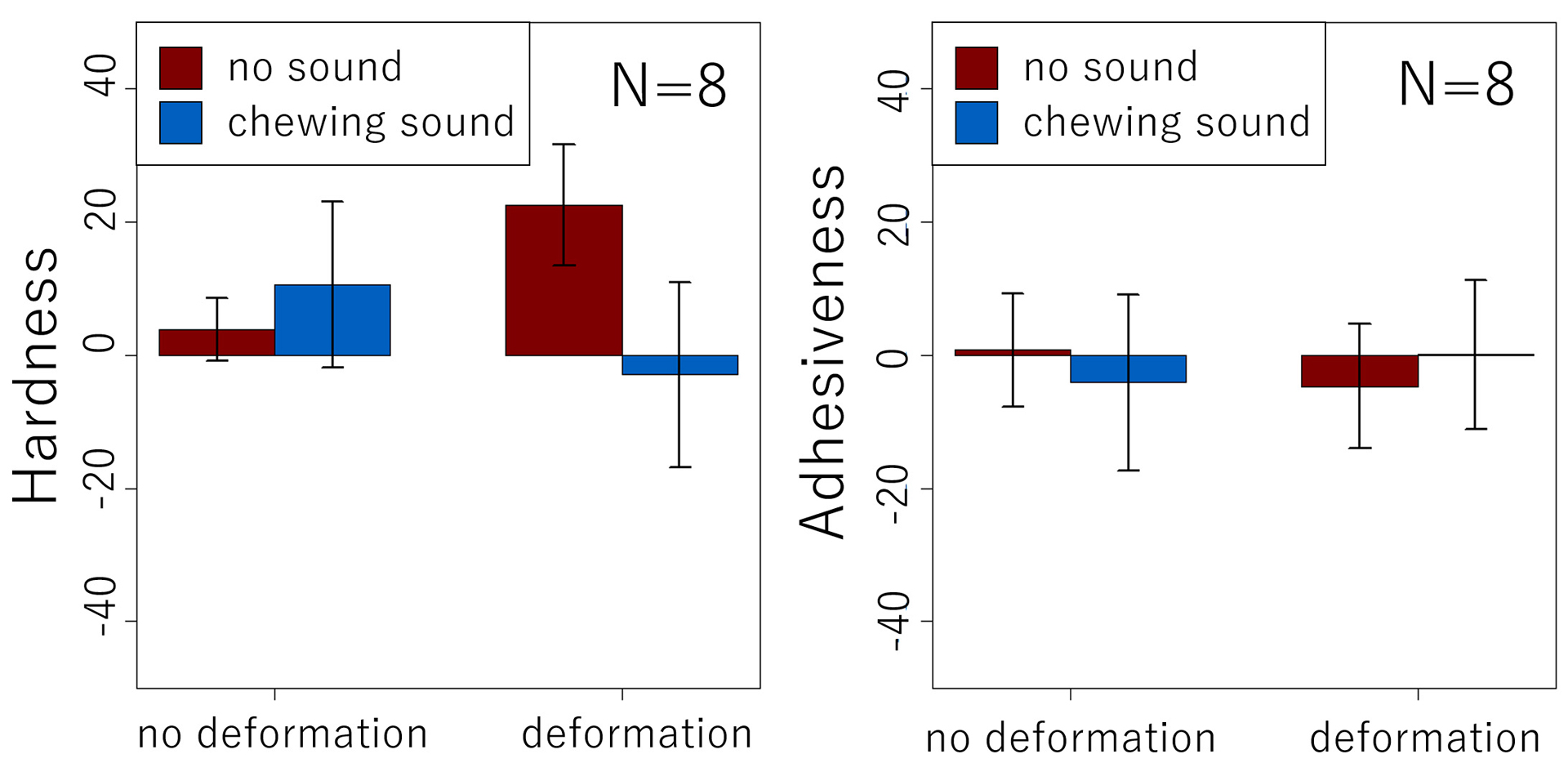“Food Texture Manipulation by Face Deformation” by Suzuki, Shigeyama, Yoshida, Narumi, Tanikawa, et al. …
Conference:
Type(s):
Entry Number: 63
Title:
- Food Texture Manipulation by Face Deformation
Presenter(s)/Author(s):
Abstract:
Food texture plays an important role in the experience of food. Researchers have proposed various methods to manipulate the perception of food texture using auditory and physical stimulation. In this paper, we demonstrate a system to present visually modified mastication movements in real-time to manipulate the perception of food texture, because visual stimuli efficiently work to enrich other food-related perceptions and showing someone their deformed posture changes somatosensory perception. The result of our experiments suggested that adding real-time feedback of facial deformation when participants open their mouths can increase the perceived chewiness of foods. Moreover, perceptions of hardness and adhesiveness were improved when the participants saw their modified face or listened to their non-modified chewing sound, while both perceptions were decreased when participants were presented with both stimuli. These results indicate the occurrence of the contrast effect.
References:
- C Arce-Lopera, T Masuda, A Kimura, Y Wada, and K Okajima. 2015. Model of vegetable freshness perception using luminance cues. Food Quality and Preference 40 (2015), 279–286.
- Akifumi Inoue, Koki Ymasaki, and Tohru Hoshi. 2016. Increasing the Number of Mastication by Augmented Reality. 2016, 35 (2016), 1–6. In Japanese.
- Hiroo Iwata, Hiroaki Yano, Takahiro Uemura, and Tetsuro Moriya. 2004. Food simulator: A haptic interface for biting. In Virtual Reality, 2004. Proceedings. IEEE. IEEE, 51–57.
- David Antonio Gomez Jauregui, Ferran Argelaguet, Anne-Helene Olivier, Maud Marchal, Franck Multon, and Anatole Lecuyer. 2014. Toward” Pseudo-Haptic Avatars”: Modifying the Visual Animation of Self-Avatar Can Simulate the Perception of Weight Lifting. IEEE Transactions on Visualization and Computer Graphics 20, 4 (2014), 654–661.
- Naoya Koizumi, Hidekazu Tanaka, Yuji Uema, and Masahiko Inami. 2011. Chewing jockey: augmented food texture by using sound based on the cross-modal effect. In Proceedings of the 8th International Conference on Advances in Computer Entertainment Technology. ACM, 21.
- Hideyoshi Yanagisawa and Natsu Mikami. 2015. HOW DOES EXPECTATION CHANGE PERCEPTION?: A SIMULATION MODEL OF EXPECTATION EFFECT. In DS 80-9 Proceedings of the 20th International Conference on Engineering Design (ICED 15) Vol 9: User-Centred Design, Design of Socio-Technical systems, Milan, Italy, 27-30.07. 15.
- Yuanchen Zhu and Steven J Gortler. 2007. 3D deformation using moving least squares. Harvard Computer Science Group Technical Report TR-10-07 (2007).





